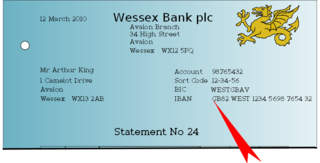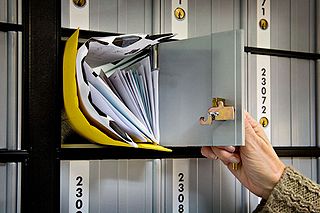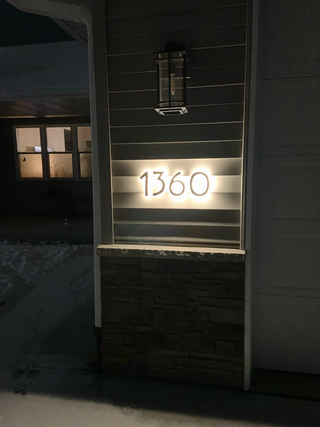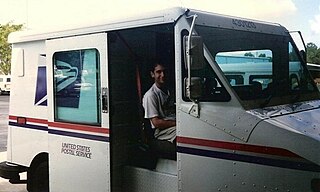
The International Bank Account Number (IBAN) is an internationally agreed upon system of identifying bank accounts across national borders to facilitate the communication and processing of cross border transactions with a reduced risk of transcription errors. An IBAN uniquely identifies the account of a customer at a financial institution. It was originally adopted by the European Committee for Banking Standards (ECBS) and since 1997 as the international standard ISO 13616 under the International Organization for Standardization (ISO). The current version is ISO 13616:2020, which indicates the Society for Worldwide Interbank Financial Telecommunication (SWIFT) as the formal registrar. Initially developed to facilitate payments within the European Union, it has been implemented by most European countries and numerous countries in other parts of the world, mainly in the Middle East and the Caribbean. By July 2024, 88 countries were using the IBAN numbering system.

Internet Protocol version 4 (IPv4) is the first version of the Internet Protocol (IP) as a standalone specification. It is one of the core protocols of standards-based internetworking methods in the Internet and other packet-switched networks. IPv4 was the first version deployed for production on SATNET in 1982 and on the ARPANET in January 1983. It is still used to route most Internet traffic today, even with the ongoing deployment of Internet Protocol version 6 (IPv6), its successor.
The Internet Protocol (IP) is the network layer communications protocol in the Internet protocol suite for relaying datagrams across network boundaries. Its routing function enables internetworking, and essentially establishes the Internet.
In telecommunications and computer networking, a network packet is a formatted unit of data carried by a packet-switched network. A packet consists of control information and user data; the latter is also known as the payload. Control information provides data for delivering the payload. Typically, control information is found in packet headers and trailers.

The United States Postal Service (USPS), also known as the Post Office, U.S. Mail, or Postal Service, is an independent agency of the executive branch of the United States federal government responsible for providing postal service in the United States, its insular areas, and its associated states. It is one of the few government agencies explicitly authorized by the Constitution of the United States. As of 2023, the USPS has 525,469 career employees and 114,623 non-career employees.

A postal code is a series of letters or digits or both, sometimes including spaces or punctuation, included in a postal address for the purpose of sorting mail.

A ZIP Code is a system of postal codes used by the United States Postal Service (USPS). The term ZIP was chosen to suggest that the mail travels more efficiently and quickly when senders use the code in the postal address.

911, sometimes written 9-1-1, is an emergency telephone number for Argentina, Canada, the Dominican Republic, Jordan, Iraq, Mexico, Pakistan, Palau, Panama, the Philippines, Sint Maarten, the United States, and Uruguay, as well as the North American Numbering Plan (NANP), one of eight N11 codes. Like other emergency numbers around the world, this number is only intended for use in emergency circumstances. Using it for any other purpose is a crime in most jurisdictions. Penalties for abuse or misuse of 911 can range from probation or community service to fines and jail time. Offenders can also be ordered to undergo counseling and have their use of telephones restricted or suspended for a period time as a condition of probation.
Enhanced 911 is a system used in North America to automatically provide the caller's location to 911 dispatchers. 911 is the universal emergency telephone number in the region. In the European Union, a similar system exists known as E112 and known as eCall when called by a vehicle.

A Canadian postal code is a six-character string that forms part of a postal address in Canada. Like British, Irish and Dutch postcodes, Canada's postal codes are alphanumeric. They are in the format A1A 1A1, where A is a letter and 1 is a digit, with a space separating the third and fourth characters. As of October 2019, there were 876,445 postal codes using Forward Sortation Areas from A0A in Newfoundland to Y1A in Yukon.
Mobility management is one of the major functions of a GSM or a UMTS network that allows mobile phones to work. The aim of mobility management is to track where the subscribers are, allowing calls, SMS and other mobile phone services to be delivered to them.
In a postal system, a delivery point is a single mailbox or other place at which mail is delivered. It differs from a street address, in that each address may have several delivery points, such as an apartment, office department, or other room. Such buildings are often called multiple-dwelling units (MDUs) by the USPS.

A post office box is a uniquely addressable lockable box located on the premises of a post office.

An address is a collection of information, presented in a mostly fixed format, used to give the location of a building, apartment, or other structure or a plot of land, generally using political boundaries and street names as references, along with other identifiers such as house or apartment numbers and organization name. Some addresses also contain special codes, such as a postal code, to make identification easier and aid in the routing of mail.
Address geocoding, or simply geocoding, is the process of taking a text-based description of a location, such as an address or the name of a place, and returning geographic coordinates, frequently latitude/longitude pair, to identify a location on the Earth's surface. Reverse geocoding, on the other hand, converts geographic coordinates to a description of a location, usually the name of a place or an addressable location. Geocoding relies on a computer representation of address points, the street / road network, together with postal and administrative boundaries.
The Coding Accuracy Support System (CASS) enables the United States Postal Service (USPS) to evaluate the accuracy of software that corrects and matches street addresses. CASS certification is offered to all mailers, service bureaus, and software vendors that would like the USPS to evaluate the quality of their address-matching software and improve the accuracy of their ZIP+4, carrier route, and five-digit coding.

Rural letter carriers are United States Postal Service and Canada Post employees who deliver mail in what are traditionally considered rural and suburban areas of the United States and Canada. Before Rural Free Delivery (RFD), rural Americans and Canadians were required to go to a post office to get their mail.
Map database management systems are software programs designed to store and recall spatial information for navigation applications, and are thus a form of Geographic information system. They are widely used in localization and navigation, especially in automotive applications. Moreover, they are playing an increasingly important role in the emerging areas of location-based services, active safety functions and advanced driver-assistance systems. Common to these functions is the requirement for an on-board map database that contains information describing the road network.
National Change of Address (NCOALink) is "a secure dataset of approximately 160 million permanent change-of-address (COA) records consisting of the names and addresses of individuals, families and businesses who have filed a change-of-address with the USPS". It is a postal address verification system maintained by the United States Postal Service, and access to it is licensed to service providers and made available to mailers. There are six licenses available including Full Service Providers and Limited Service Providers. The use of NCOALink is required in order to obtain bulk mail rates, as it minimizes the number of UAA mailpieces saving the mailer money and reducing the USPS's processing of this type of mail.
Postal address verification is the process used to check the validity and deliverability of a physical mailing address. According to the United States Postal Service, an address is valid if it is CASS-certified, meaning that it exists within the comprehensive list of mailable addresses in their Address Management System. This is different from the credit card Address Verification System (AVS), which is the method used by credit card processors to authenticate ownership of a credit card by verifying that the account on the credit card matches the billing address on file. Credit card AVS does not determine deliverability of an address.









